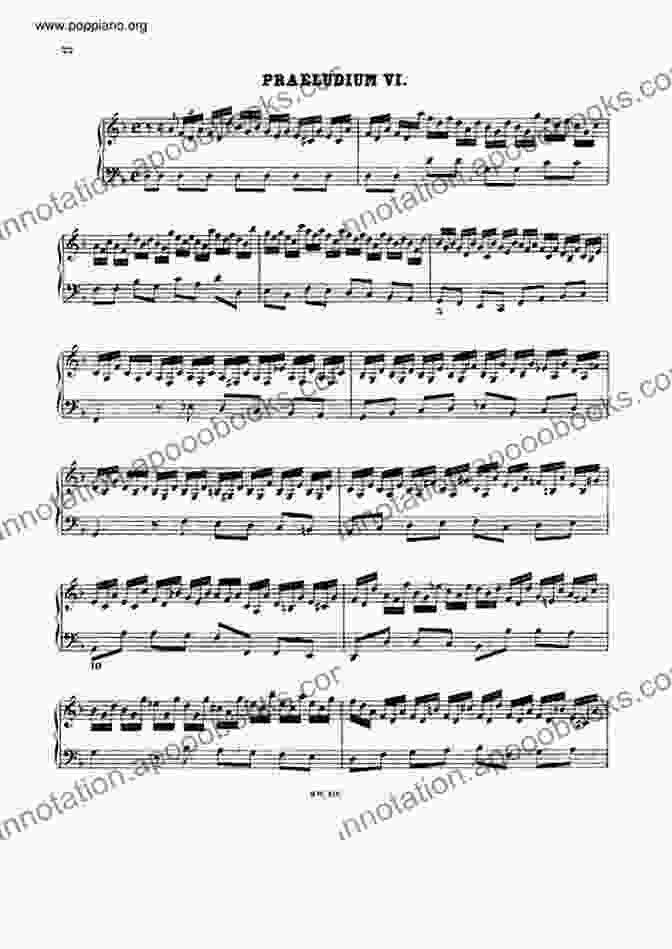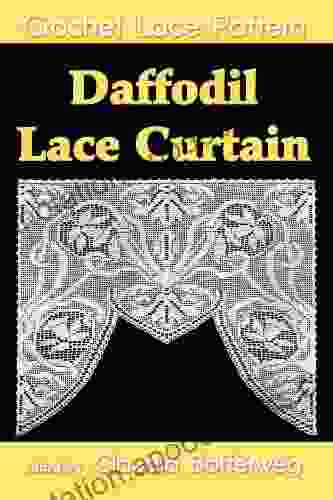Mastering Bach's Prelude and Fugue in C Minor: Unlocking Harmonic Solutions with Patterns

4.7 out of 5
| Language | : | English |
| File size | : | 53008 KB |
| Screen Reader | : | Supported |
| Print length | : | 26 pages |
| Lending | : | Enabled |
Johann Sebastian Bach's Prelude and Fugue in C Minor from The Well-Tempered Clavier is a cornerstone of classical piano repertoire, renowned for its intricate harmonies and fugue's complex contrapuntal structure. This comprehensive guide delves into the harmonic underpinnings and patterns that shape this masterpiece, providing pianists with a roadmap to unlock its musical intricacies and achieve unparalleled performance.
Harmonic Analysis
The Prelude and Fugue in C Minor is a treasure trove of harmonic exploration. Bach masterfully employs a range of chord progressions, inversions, and dissonances to create a rich and evolving harmonic tapestry.
- Root Position Triads: The Prelude opens with a simple root position C minor triad, establishing the tonal center. Throughout the piece, triads in various inversions provide harmonic support and stability.
- Diminished and Augmented Triads: These dissonant chords add drama and tension to the music. The Prelude's opening descending chromatic bassline features a diminished triad, while the Fugue employs augmented triads for harmonic contrast.
- Secondary Dominants: Bach frequently uses secondary dominants to create a sense of harmonic motion and progression. For example, the V7/IV chord in the Prelude resolves to the IV chord, providing a strong sense of harmonic directionality.
- Suspensions: The suspension of dissonant intervals creates melodic tension that enhances the harmonic structure. Bach uses suspensions throughout the Prelude and Fugue, adding a sense of movement and anticipation.
Fugue Structure
The Fugue in C Minor is a three-voice fugue, characterized by its intricate contrapuntal texture. The fugue's subject, a distinctive rising melodic line, provides the basis for all three voices.
- Exposition: The fugue's exposition introduces the subject in all three voices, one after the other. The initial exposition begins in C minor, with subsequent expositions occurring in F major and G major.
- Development: The development section showcases the fugue's contrapuntal complexity. The subject and countersubject are manipulated in various ways, creating a tapestry of interwoven melodic lines.
- Recapitulation: The fugue's recapitulation closes the piece by presenting the subject in all three voices, this time in the tonic key of C minor. The recapitulation provides a sense of closure and reaffirms the tonal center.
Performance Tips
To achieve a masterful performance of the Prelude and Fugue in C Minor, pianists should consider the following tips:
- Understand the Harmonic Structure: A thorough understanding of the harmonic progressions and patterns will guide your interpretation. Analyze the chord sequences, inversions, and dissonances to grasp the harmonic framework of the piece.
- Practice the Voices Separately: Before tackling the fugue's intricate counterpoint, practice each voice individually. This will help you internalize the melodic lines and develop the necessary finger coordination.
- Use Patterns to Enhance Accuracy: The Prelude and Fugue contain numerous patterns and sequences. Identify these patterns and utilize them to improve your accuracy and fluency. For example, the ascending arpeggiated figuration in the Prelude's opening bars can be broken down into a simple pattern of 1-2-3-4 on the white keys.
- Listen Actively: Careful listening to recordings of the Prelude and Fugue can provide valuable insights into phrasing, dynamics, and overall interpretation. Listen attentively to the interplay of the voices, the harmonic progression, and the balance between the contrapuntal lines.
- Seek Professional Guidance: If possible, consider taking lessons with an experienced piano teacher who can provide personalized guidance and feedback on your performance. A qualified teacher can help you refine your technique, develop your interpretation, and overcome any challenges you encounter.
Mastering Bach's Prelude and Fugue in C Minor is a journey that rewards pianists with a profound understanding of harmony, counterpoint, and the art of performance. By delving into the harmonic solutions and patterns that shape this iconic masterpiece, pianists can unlock its musical treasures and achieve a truly exceptional performance that captivates audiences.

4.7 out of 5
| Language | : | English |
| File size | : | 53008 KB |
| Screen Reader | : | Supported |
| Print length | : | 26 pages |
| Lending | : | Enabled |
Do you want to contribute by writing guest posts on this blog?
Please contact us and send us a resume of previous articles that you have written.
 Book
Book Novel
Novel Page
Page Chapter
Chapter Text
Text Story
Story Genre
Genre Reader
Reader Library
Library Paperback
Paperback E-book
E-book Magazine
Magazine Newspaper
Newspaper Paragraph
Paragraph Sentence
Sentence Bookmark
Bookmark Shelf
Shelf Glossary
Glossary Bibliography
Bibliography Foreword
Foreword Preface
Preface Synopsis
Synopsis Annotation
Annotation Footnote
Footnote Manuscript
Manuscript Scroll
Scroll Codex
Codex Tome
Tome Bestseller
Bestseller Classics
Classics Library card
Library card Narrative
Narrative Biography
Biography Autobiography
Autobiography Memoir
Memoir Reference
Reference Encyclopedia
Encyclopedia Clarence Hawkes
Clarence Hawkes Christof Weber
Christof Weber Tulisa Contostavlos
Tulisa Contostavlos Jacquelyn Mitchard
Jacquelyn Mitchard Chris Claremont
Chris Claremont Claire Splan
Claire Splan Robert A Francis
Robert A Francis Claudia Botterweg
Claudia Botterweg John Collins
John Collins Josephine Ruby
Josephine Ruby Christopher Marsh
Christopher Marsh Christopher Charlton
Christopher Charlton Chef Taylor
Chef Taylor Christopher M White
Christopher M White John Davidson
John Davidson James Robinson
James Robinson Claude Debussy
Claude Debussy Charlotte Nystrom
Charlotte Nystrom James Dean
James Dean Chris Christman
Chris Christman
Light bulbAdvertise smarter! Our strategic ad space ensures maximum exposure. Reserve your spot today!

 Pablo NerudaNegotiating As If Your Life Depended On It: The Ultimate Guide to Masterful...
Pablo NerudaNegotiating As If Your Life Depended On It: The Ultimate Guide to Masterful... Mario BenedettiFollow ·3k
Mario BenedettiFollow ·3k Keith CoxFollow ·13.3k
Keith CoxFollow ·13.3k Natsume SōsekiFollow ·15.8k
Natsume SōsekiFollow ·15.8k W. Somerset MaughamFollow ·3.1k
W. Somerset MaughamFollow ·3.1k Hugh BellFollow ·15.2k
Hugh BellFollow ·15.2k Blake KennedyFollow ·16.7k
Blake KennedyFollow ·16.7k Gabriel HayesFollow ·15.8k
Gabriel HayesFollow ·15.8k Arthur C. ClarkeFollow ·13.4k
Arthur C. ClarkeFollow ·13.4k

 Kevin Turner
Kevin TurnerDive into the Enchanting World of "Crazy Like Fox": A...
Prepare yourself for a literary adventure...

 Ralph Waldo Emerson
Ralph Waldo EmersonUnlock the Elegance of Daffodil Lace: An Immersive Guide...
: A Tapestry of Delicate...

 Gerald Parker
Gerald ParkerNever Lose An Argument Again: 20 Powerful Techniques From...
Are you tired of losing...

 Xavier Bell
Xavier BellSeven Animal Insertions Filet Crochet Pattern: Embark on...
Welcome to the captivating...

 Eugene Powell
Eugene PowellMagomago in TDS Magomago 12: An Unforgettable Adventure...
Step into the Enchanting World of...

 Marvin Hayes
Marvin HayesSoft Felting Needle Holder Excellence In Reborn Artistry
Unveiling the Secrets of the...
4.7 out of 5
| Language | : | English |
| File size | : | 53008 KB |
| Screen Reader | : | Supported |
| Print length | : | 26 pages |
| Lending | : | Enabled |










